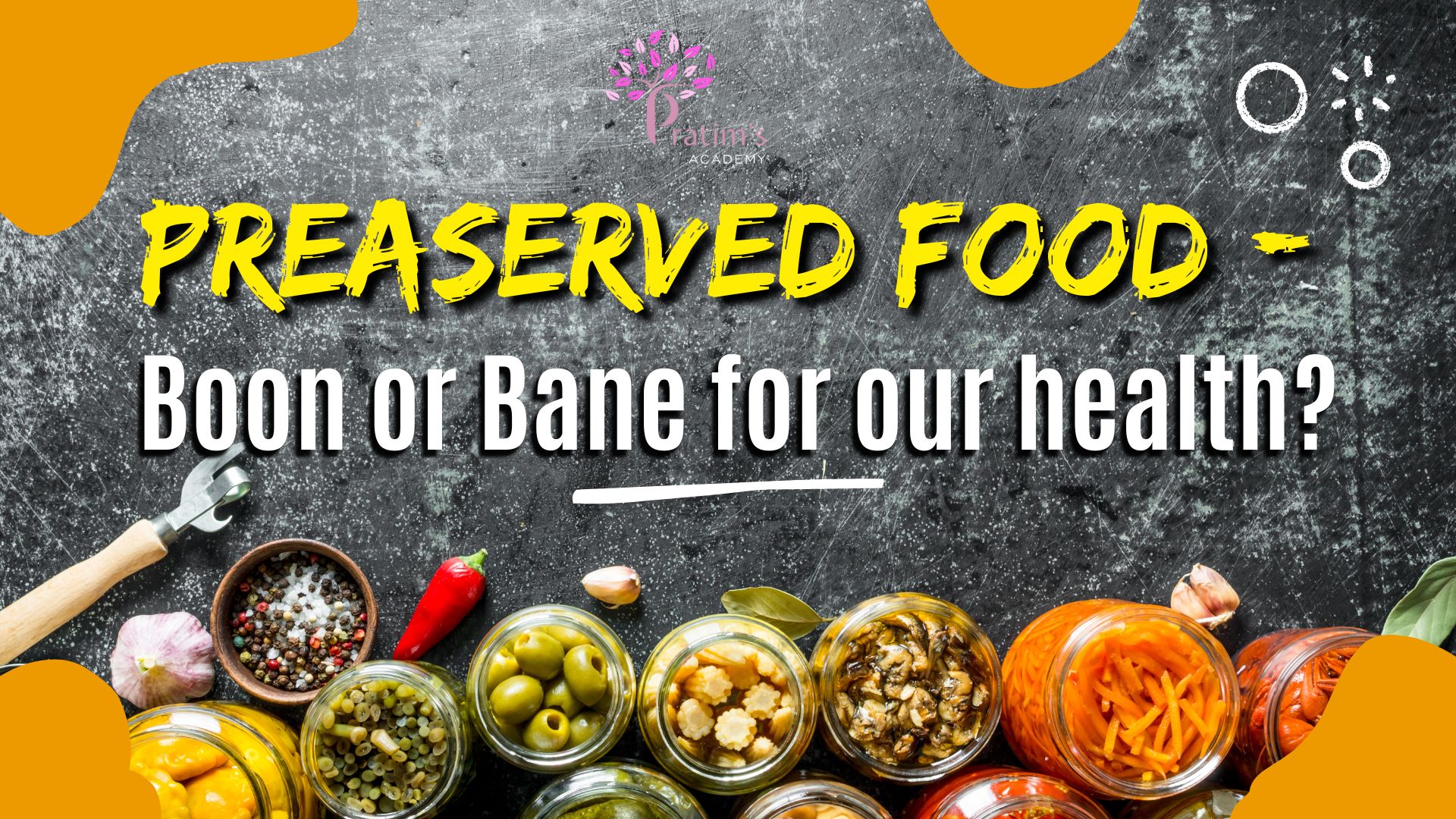
In the modern era of rapid pace, preserved foods have become a fundamental part of our daily routines. Whether through canned vegetables, frozen meals, pickles, or packaged snacks, preserved food offers convenience, an extended shelf life, and hassle-free accessibility.

However, the escalating reliance on preserved food prompts an essential inquiry: Is preserved food beneficial or harmful to our health? To better comprehend the implications of preserved food on our health, let’s conduct a thorough analysis of its pros and cons.

Canning: This process involves placing food in airtight containers—usually jars or cans—and heating them to destroy harmful microorganisms. It helps maintain the food’s safety and quality for a long period.

Freezing: This method lowers the temperature of food below 0°C (32°F), significantly slowing the activity of bacteria, molds, and yeasts. Freezing helps retain the food’s taste, texture, and nutritional value for extended storage, often lasting several weeks to months.

Drying: Food preservation through drying involves the removal of moisture from food, generally employing sun, air, or heat. Without moisture, bacteria and mold are prevented from growing, thus significantly prolonging the food’s shelf life. Fruits, herbs, meats (like jerky), and grains are common foods that undergo drying. This process also makes food more lightweight and easier to store.

Salting is a traditional preservation technique that involves adding salt to food to remove moisture. As bacteria require water to grow, this method helps prevent spoilage. Salting is commonly employed for preserving meat, fish, and pickles, while also enhancing flavor and ensuring food safety for extended periods.

Pickling is a preservation technique that involves dipping food in a solution of vinegar, salt, and various spices. The acidic environment inhibits the growth of harmful bacteria, ensuring the food remains safe for consumption over an extended period. Commonly pickled foods include cucumbers, onions, carrots, and even eggs. Pickling imparts a distinctive sour, tangy flavor in addition to preserving the food.

Preservation by chemical preservatives (like nitrates, sulfites, benzoates): Generally, these methods are commonly practiced to reduce food spoilage, ensure food security, and allow access to seasonal foods at any time of the year.
Convenience and Time-Efficiency: Preserved food necessitates minimal preparation and is ideal for busy lifestyles, facilitating swift meal planning without significantly compromising nutritional value.
Increased Shelf Life: A significant advantage is that preserved foods can remain consumable for weeks, months, or even years, minimizing waste and the frequency of shopping trips.
Availability: Seasonal foods and products from various regions can be made available year-round through preservation.
Despite the benefits, excessive consumption or improper use of preserved foods can pose several health risks:

The health implications of preserved foods are significantly determined by how they are preserved and how frequently they are consumed. Choosing natural preservation methods and enjoying these foods in moderation can help maximize their nutritional benefits while ensuring safety. In contrast, frequent consumption of artificially preserved foods with excessive salt, sugar, or unhealthy fats can have severe health repercussions, including high blood pressure, obesity, diabetes, heart disease, and specific cancers, emphasizing the need for informed food decisions. Preserved food, therefore, cannot be categorized as entirely good or bad. It exists in a middle sphere. The key is balance, awareness, and moderation.